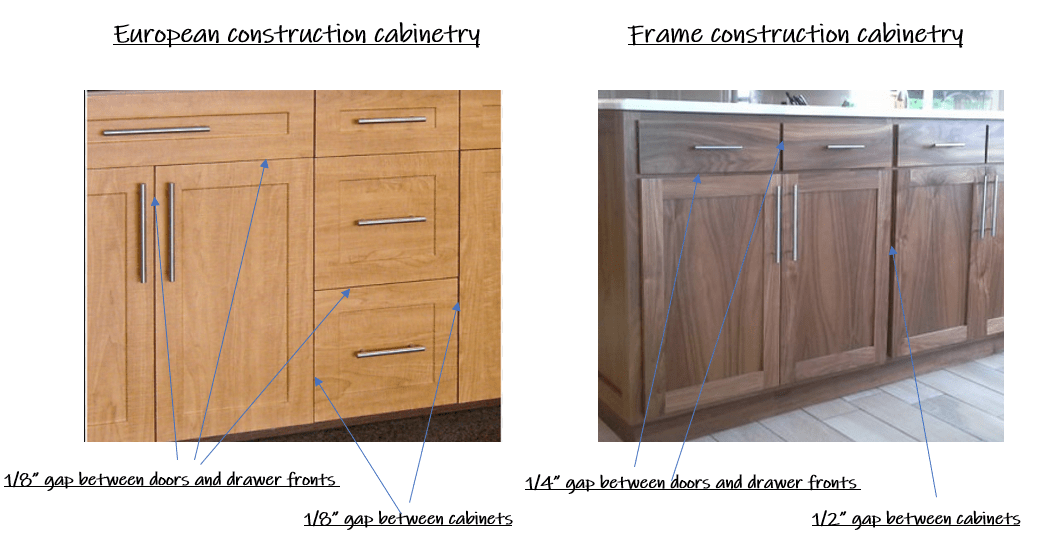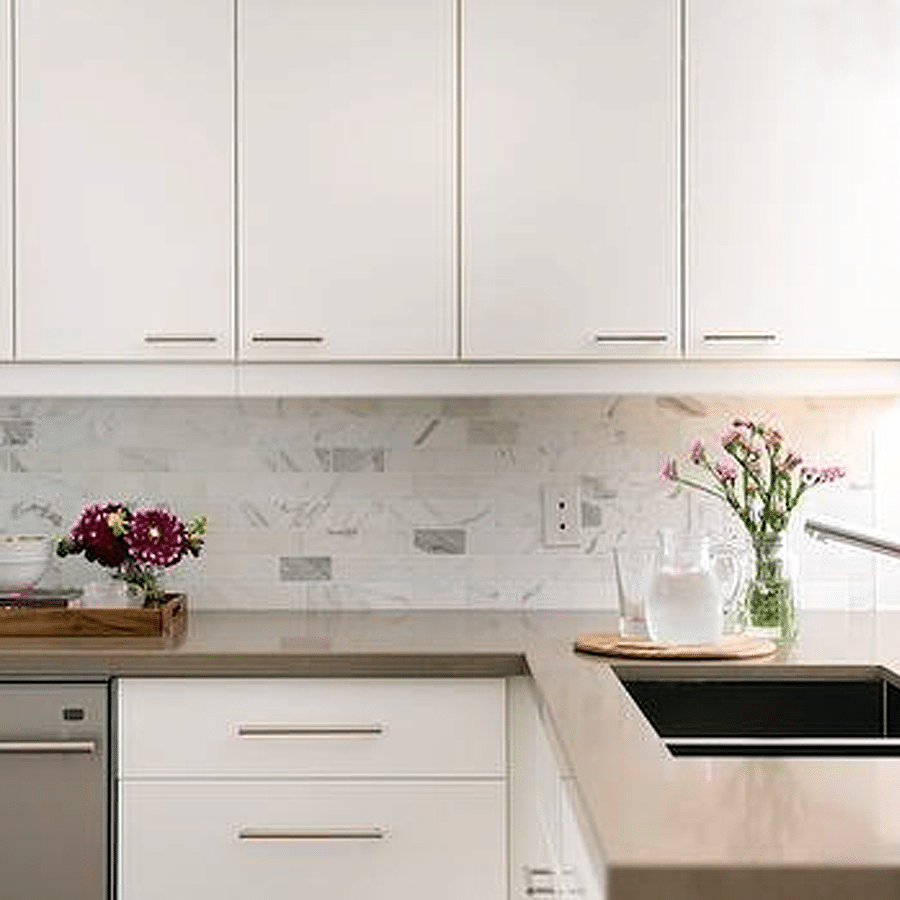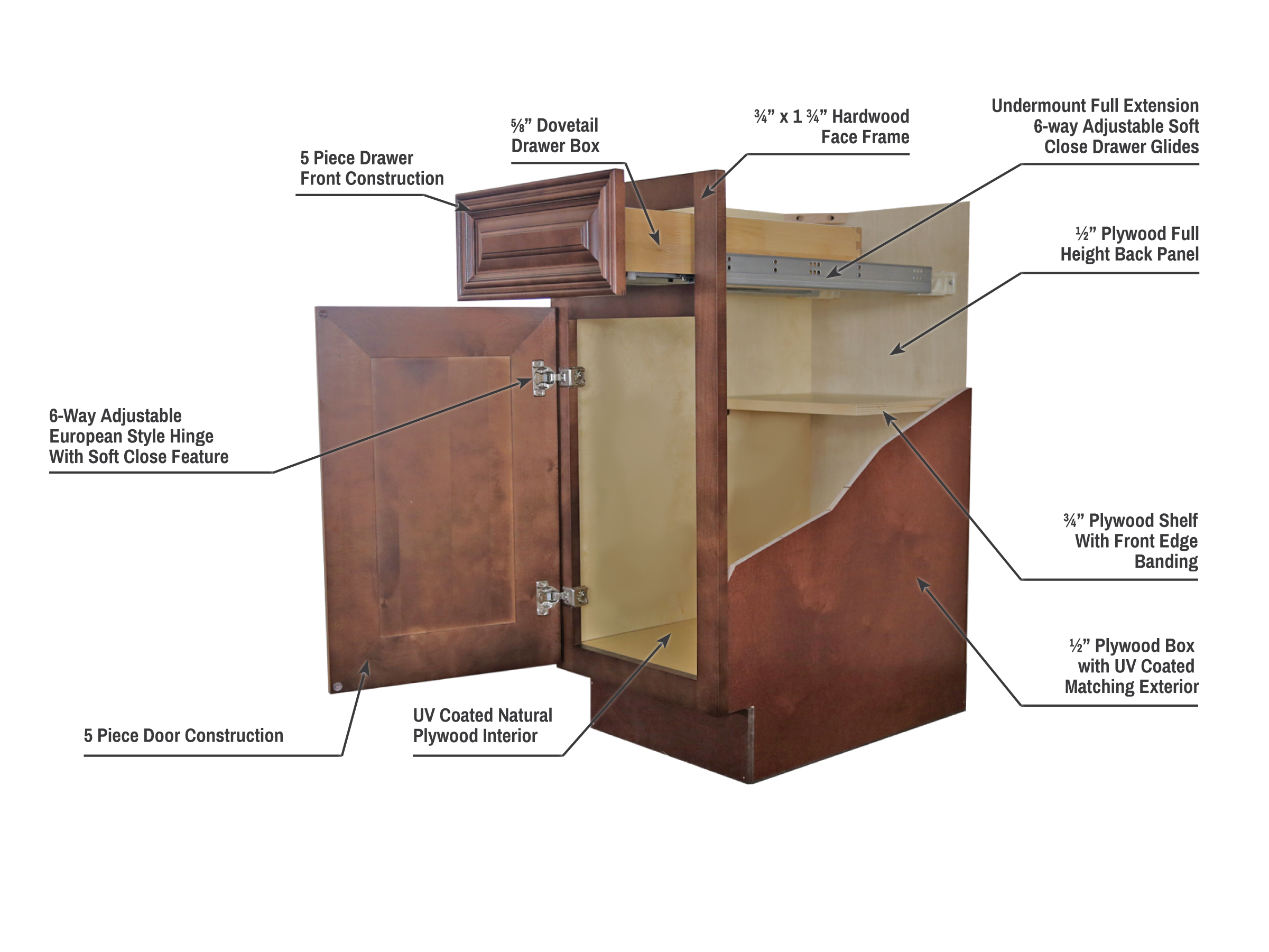Euro-Style Cabinet Construction: Euro Style Cabinets Vs Face Frame

Euro-style cabinets are a modern take on traditional cabinet design, characterized by their sleek, minimalist aesthetic and innovative construction techniques. Unlike face-frame cabinets, which feature a visible frame surrounding each cabinet door, Euro-style cabinets rely on a frameless design, resulting in a clean, contemporary look.
Concealed Hinges and Soft-Close Mechanisms
Euro-style cabinets utilize concealed hinges that are mounted directly to the cabinet door and the cabinet side, creating a seamless, integrated appearance. These hinges allow for full door opening and offer superior durability compared to traditional exposed hinges. Additionally, Euro-style cabinets often incorporate soft-close mechanisms, which provide a quiet and controlled closing experience. These mechanisms dampen the closing motion, preventing slamming and extending the life of the cabinets.
Advantages of Euro-Style Cabinets
Euro-style cabinets offer a range of advantages, including:
- Clean Lines and Modern Aesthetic: The absence of a face frame creates a sleek and contemporary look, enhancing the overall design of the kitchen or bathroom.
- Maximized Storage Space: The frameless design allows for a wider opening and greater interior space, maximizing storage capacity.
- Enhanced Durability: The use of high-quality materials and construction techniques ensures longevity and resistance to wear and tear.
- Customization Options: Euro-style cabinets offer a wide range of customization options, including door styles, finishes, and hardware, allowing homeowners to personalize their space.
Euro-Style Cabinet Door Styles and Materials
Euro-style cabinets offer a diverse range of door styles and materials to suit different preferences and design aesthetics. Popular door styles include:
- Slab Doors: Simple, flat panels with a clean, modern look.
- Recessed Panel Doors: Feature a recessed panel within the door, adding visual depth and dimension.
- Raised Panel Doors: Offer a classic, traditional look with a raised panel design.
- Shaker Doors: Characterized by a simple, rectangular frame with a flat center panel.
Common materials used for Euro-style cabinet doors include:
- Wood: Offers durability, warmth, and a natural aesthetic.
- Thermofoil: A durable, moisture-resistant material that mimics the look of wood.
- Acrylic: Provides a sleek, high-gloss finish and is easy to clean.
- Laminate: An affordable and durable option available in a wide range of colors and patterns.
Pros and Cons of Euro-Style Cabinets
| Pros | Cons |
|---|---|
| Clean lines and modern aesthetic | Higher initial cost compared to face-frame cabinets |
| Maximized storage space | May require professional installation |
| Enhanced durability | Limited availability in some areas |
| Customization options | May be more susceptible to damage from impacts |
Face Frame Cabinet Construction

Face frame cabinets, a cornerstone of traditional cabinetry, have a long history of enduring elegance and robust construction. They are characterized by a visible frame surrounding each cabinet door, adding a distinct architectural element to kitchen and bathroom designs.
Face Frame Construction Explained
The face frame, typically constructed from solid wood or engineered wood, provides the structural backbone of the cabinet. It is a rigid framework that supports the cabinet doors, drawers, and shelves, ensuring stability and longevity. The frame itself is typically composed of vertical stiles and horizontal rails, creating a grid-like structure that forms the cabinet’s exterior. This construction method creates a solid and sturdy base, making face frame cabinets a reliable choice for kitchens and bathrooms that experience heavy use.
Euro-Style vs. Face Frame

Choosing the right cabinet style for your kitchen is a crucial decision that significantly impacts both aesthetics and functionality. Euro-style and face frame cabinets are the two dominant contenders, each with its own set of strengths and weaknesses. Understanding the nuances of each style allows you to make an informed choice that aligns with your kitchen design goals and budget.
Construction Techniques
Euro-style and face frame cabinets differ significantly in their construction techniques. Euro-style cabinets employ a minimalist approach, relying on a frameless construction method. This means that the cabinet doors and drawers are mounted directly to the cabinet boxes, eliminating the need for a traditional face frame. In contrast, face frame cabinets feature a visible frame that surrounds the cabinet box, providing structural support and a distinct aesthetic.
- Euro-Style: Frameless construction, doors and drawers mounted directly to cabinet boxes, minimalist aesthetic.
- Face Frame: Framed construction, visible frame surrounding the cabinet box, traditional aesthetic.
Aesthetics
The aesthetic appeal of Euro-style and face frame cabinets is a matter of personal preference. Euro-style cabinets offer a sleek and contemporary look, characterized by clean lines and minimal visual clutter. The absence of a face frame creates a sense of spaciousness and openness, making them particularly well-suited for modern kitchens. Face frame cabinets, on the other hand, exude a more traditional and classic feel. The visible frame adds architectural detail and visual interest, complementing traditional and transitional kitchen designs.
- Euro-Style: Sleek, contemporary, clean lines, minimal visual clutter, sense of spaciousness.
- Face Frame: Traditional, classic, visible frame adds architectural detail, complements traditional and transitional kitchen designs.
Functionality
Both Euro-style and face frame cabinets offer practical functionality, but they differ in certain aspects. Euro-style cabinets generally have a higher degree of accessibility due to their frameless construction. This allows for wider cabinet openings and easier access to stored items. Additionally, Euro-style cabinets often feature soft-close drawers and doors, enhancing convenience and reducing noise. Face frame cabinets, while offering robust construction, may have slightly less accessibility due to the presence of the frame. However, they can provide greater stability and durability, especially for heavy-duty cabinets.
- Euro-Style: Higher accessibility, wider cabinet openings, soft-close drawers and doors, enhanced convenience.
- Face Frame: Robust construction, greater stability and durability, may have slightly less accessibility.
Cost
The cost of Euro-style and face frame cabinets can vary significantly depending on factors such as materials, craftsmanship, and customization options. Generally, Euro-style cabinets are considered more expensive than face frame cabinets. This is primarily due to the use of higher-quality materials and more complex construction techniques. Face frame cabinets, with their simpler construction, tend to be more budget-friendly.
- Euro-Style: More expensive, higher-quality materials, complex construction techniques.
- Face Frame: More budget-friendly, simpler construction.
Durability
Both Euro-style and face frame cabinets can be highly durable when constructed with quality materials and craftsmanship. However, Euro-style cabinets, due to their frameless construction, may be more susceptible to warping or damage if not properly constructed or maintained. Face frame cabinets, with their added structural support, are generally considered more durable and resistant to wear and tear.
- Euro-Style: May be more susceptible to warping or damage if not properly constructed or maintained.
- Face Frame: Generally considered more durable and resistant to wear and tear.
Customization Options
Euro-style cabinets offer a wider range of customization options compared to face frame cabinets. Their minimalist design allows for greater flexibility in terms of door styles, finishes, and hardware. This makes them ideal for creating a truly personalized kitchen that reflects your unique style. Face frame cabinets, while offering some customization possibilities, are generally more limited in terms of design flexibility.
- Euro-Style: Wider range of customization options, greater flexibility in terms of door styles, finishes, and hardware.
- Face Frame: More limited in terms of design flexibility.
Suitability for Different Kitchen Layouts and Design Preferences, Euro style cabinets vs face frame
The choice between Euro-style and face frame cabinets depends largely on your kitchen layout and design preferences. Euro-style cabinets are well-suited for smaller kitchens where maximizing space and creating a minimalist aesthetic are priorities. Their clean lines and frameless construction contribute to a sense of openness and spaciousness. Face frame cabinets, with their traditional charm and robust construction, are ideal for larger kitchens where a classic and timeless design is desired. They can also be used to create a sense of grandeur and formality.
- Euro-Style: Well-suited for smaller kitchens, maximizing space, minimalist aesthetic, clean lines, frameless construction.
- Face Frame: Ideal for larger kitchens, classic and timeless design, sense of grandeur and formality.
Key Features Comparison
| Feature | Euro-Style | Face Frame |
|---|---|---|
| Construction | Frameless | Framed |
| Aesthetics | Sleek, contemporary | Traditional, classic |
| Functionality | Higher accessibility, wider openings, soft-close doors and drawers | Robust construction, greater stability |
| Cost | More expensive | More budget-friendly |
| Durability | May be more susceptible to warping or damage | Generally more durable |
| Customization Options | Wider range of options | More limited options |
| Suitability for Kitchen Layouts | Smaller kitchens, maximizing space | Larger kitchens, traditional design |
Impact on Overall Kitchen Design
The choice between Euro-style and face frame cabinets has a significant impact on the overall kitchen design. Euro-style cabinets, with their minimalist aesthetic, create a modern and streamlined look. They are particularly well-suited for contemporary kitchens featuring sleek countertops, stainless steel appliances, and open shelving. Face frame cabinets, with their traditional charm, create a more classic and timeless design. They complement kitchens with warm wood tones, granite countertops, and decorative backsplashes.
Ultimately, the decision between Euro-style and face frame cabinets comes down to personal preference and the specific needs of your kitchen. By carefully considering the factors discussed above, you can make an informed choice that results in a kitchen that is both beautiful and functional.
Euro style cabinets vs face frame – Euro-style cabinets, known for their sleek, minimalist aesthetic, often pair well with natural stone countertops like Bianco Romano granite, creating a sophisticated and timeless kitchen design. The clean lines of euro-style cabinets complement the subtle veining of Bianco Romano, while the warmth of cherry wood cabinets adds a touch of traditional elegance.
For those seeking a kitchen that seamlessly blends modern and classic elements, the combination of bianco romano granite with cherry cabinets is a winning choice, especially when paired with the sleekness of euro-style cabinets.
The debate between euro-style cabinets and face-frame cabinets often centers on aesthetics, with euro-style offering a sleek, minimalist look while face-frame cabinets provide a more traditional feel. This choice can be further influenced by the color scheme of the room, and a popular trend is to pair black walls with white cabinets , which can enhance the clean lines of euro-style cabinets.
Ultimately, the decision hinges on personal preference and the overall design aesthetic you wish to achieve.
